Cosa significa Bess nella batteria?
Mentre il mondo si sposta verso le energie rinnovabili e una maggiore resilienza della rete, probabilmente senti l'acronimo "BESS" sempre di più. Cosa significa BESS nel contesto delle batterie, ed è solo un altro nome per una grande batteria, o qualcosa di più? Comprendere questo termine è fondamentale per orientarsi nel mondo del moderno stoccaggio dell’energia.
Nel settore energetico, Bess sta per il sistema di accumulo di energia della batteria. È fondamentale capire che un BESS non è solo la batteria stessa; È tutto, sistema integrato che comprende i moduli batteria, un sistema di gestione della batteria vitale (BMS), un sistema di conversione di potenza (PC o inverter), software di controllo, e tutti i componenti di sicurezza necessari. Pensa alla batteria come al serbatoio del carburante, ma il BESS è il completo, motore intelligente pronto ad immagazzinare e fornire energia su richiesta.
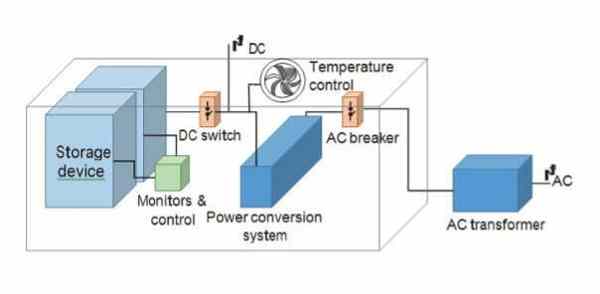
A Gycx solare, siamo specializzati nella fornitura di queste soluzioni BESS complete. Quando un cliente ha bisogno di accumulo di energia, non gli diamo semplicemente una batteria; progettiamo un sistema completo in cui tutte le parti lavorano in armonia per garantire sicurezza, affidabile, e potenza efficiente. Esploriamo cosa ciò comporta.
Quali sono gli svantaggi di Bess?
Un sistema di accumulo dell’energia a batteria offre vantaggi incredibili, ma come ogni grande tecnologia, è importante avere una visione equilibrata e comprenderne i potenziali svantaggi prima di effettuare un investimento. COSÌ, quali sono i contro da considerare?
Gli svantaggi primari di un Bess sono i suoi significativo costo di capitale iniziale, suo durata operativa finita poiché tutte le batterie si degradano nel tempo, Perdite di efficienza di andata e ritorno (una piccola percentuale di energia viene persa durante la carica e la scarica), IL spazio fisico richiesto per l'installazione, e il considerazioni ambientali legati alla produzione e al riciclaggio a fine vita. Tuttavia, tecnologia moderna, in particolare i sistemi che utilizzano litio ferro fosfato (LFP) batterie, è in continuo miglioramento per affrontare queste sfide, aumentare il valore e la sostenibilità a lungo termine.
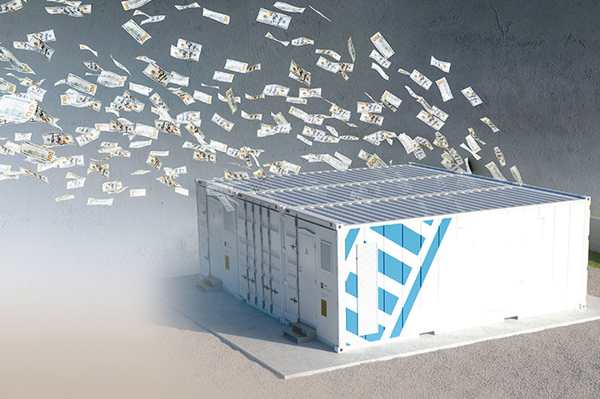
Immergersi più in profondità: Uno sguardo realistico alle sfide BESS
Analizziamo questi potenziali svantaggi:
- Alto costo iniziale: Un Bess è un investimento significativo. Il costo delle batterie, un inverter di alta qualità, componenti di sicurezza, e l'installazione professionale aggiunge.
- La nostra prospettiva: Mentre il costo iniziale è un fattore chiave, incoraggiamo i clienti a considerare il costo di archiviazione livellato (Lcos) e il valore a lungo termine. Un BESS può ridurre drasticamente le bollette elettriche (Soprattutto se abbinato al solare), fornire un'inestimabile potenza di backup, e proteggersi dall’aumento dei prezzi dell’energia. Incentivi come il credito d’imposta federale sugli investimenti (ITC) negli Stati Uniti. ridurre significativamente anche il costo netto.
- Durata finita & Degradazione: La componente batteria di un BESS non dura per sempre. Perde una piccola quantità di capacità ogni anno e ad ogni ciclo di carica/scarica.
- La nostra prospettiva: È qui che la scelta della tecnologia giusta diventa cruciale. Diamo la priorità alle batterie LFP, che hanno una durata molto lunga (ne parleremo più avanti), e progettiamo i sistemi in modo che non vengano stressati inutilmente, massimizzandone la durata. UN 10+ la durata di un anno è ora standard per la qualità LFP BESS.
- Perdite di efficienza di andata e ritorno: Non esci 100% dell'energia che hai messo. Una parte viene persa sotto forma di calore.
- La nostra prospettiva: I moderni BESS agli ioni di litio sono altamente efficienti, con efficienze di andata e ritorno in genere tra 85% E 95%. Anche se non perfetto, questo è di gran lunga superiore alle tecnologie di archiviazione precedenti. Utilizziamo inverter e componenti ad alta efficienza per ridurre al minimo queste perdite.
- Impronta fisica: Le unità BESS richiedono uno spazio fisico dedicato, che può essere una considerazione per le case o le imprese più piccole.
- La nostra prospettiva: I design moderni come le batterie montate a parete e i sistemi compatti con montaggio su rack sono estremamente efficienti in termini di spazio. Lavoriamo con i clienti per trovare la posizione migliore e sicura, compiacente, e minimamente invadente.
- Preoccupazioni ambientali/riciclaggio: La produzione di batterie ha un impatto ambientale, e il riciclaggio delle batterie agli ioni di litio è un settore in via di sviluppo.
- La nostra prospettiva: Preferiamo chimica LFP, che evita l'uso del cobalto, un minerale con notevoli preoccupazioni etiche e ambientali. Inoltre, supportiamo e restiamo informati sul crescente settore del riciclaggio delle batterie, incoraggiare una gestione responsabile del fine vita.
Qual è la durata di una batteria Bess?
Quando si considera un BESS, la sua durata è un fattore critico nel determinare il suo valore complessivo. Quanti anni di servizio affidabile puoi aspettarti dalle batterie di uno di questi sistemi avanzati?
Il componente della batteria in un moderno bess, che in genere usa LFP (Fosfato di ferro al litio) chimica, è progettato per una lunga vita operativa. In genere puoi aspettarti un Vita del calendario di 10 A 20 anni e a ciclo di vita che varia da 3,000 a finire 6,000 Cicli di scarica a carica completa. Per garantire questa performance, i produttori BESS più rinomati offrono a 10-Garanzia dell'anno ciò garantisce che la batteria ne conserverà una parte significativa (PER ESEMPIO., 70%) della sua capacità originaria dopo un decennio di servizio.
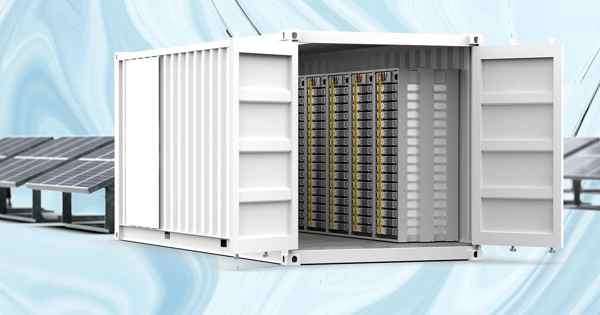
Immergersi più in profondità: Le chiavi della longevità BESS
Diversi fattori contribuiscono alla lunga durata di un BESS ben progettato:
- Chimica superiore (LFP): Come abbiamo discusso, LFP è chimicamente più stabile e robusto rispetto ad altri comuni tipi di ioni di litio come NMC. Ciò lo rende ideale per il ciclo quotidiano richiesto in un'applicazione di accumulo di energia solare. Una batteria che si cicla una volta al giorno per 15 Gli anni subiranno 5,475 cicli, un numero che le batterie LFP di alta qualità sono costruite per gestire.
- BMS intelligente: Il sistema di gestione della batteria è vitale. Funge da guardiano, impedendo alla batteria di funzionare al di fuori dei limiti di sicurezza (temperatura, voltaggio, attuale) e garantire che tutte le sue cellule interne siano bilanciate. Questa protezione riduce drasticamente lo stress e prolunga la durata della batteria.
- Dimensionamento corretto del sistema: Un sistema adeguatamente dimensionato per il carico domestico o aziendale significa che la batteria non viene costantemente spinta ai suoi limiti assoluti (velocità di scarico massima o 100% profondità di scarico), che ne riduce l'usura nel tempo.
- Gestione termica: L'armadio BESS e il suo sistema di raffreddamento (passivo o attivo) sono progettati per mantenere le batterie entro l'intervallo di temperatura operativa ideale. Ciò è particolarmente importante nei climi caldi come Singapore, Poiché il calore eccessivo è un nemico principale della longevità della batteria.
Gycx Solar Story: "Diciamo sempre ai nostri clienti che un BESS è una risorsa energetica a lungo termine. Quando installiamo un sistema con batterie LFP e una garanzia di 10 anni, stiamo fornendo loro un decennio o più di risparmio energetico e sicurezza prevedibili, il che rende l'investimento iniziale molto più chiaro."
Qual è la differenza tra UPS e BESS?
Potresti sentire "UPS" e "Bess" e penso che siano solo due modi per dire "potere di riserva"." Mentre entrambi i sistemi utilizzano batterie per fornire energia quando la rete si interrompe, il loro scopo primario, scala, e la durata sono molto diverse.
UN UPS (Alimentazione ininterrotto) è tipicamente progettato per fornire a breve termine, energia pulita (solitamente per pochi minuti) per consentire ai dispositivi elettronici sensibili come computer e server di spegnersi correttamente durante un'interruzione. UN BESS (Sistema di accumulo dell'energia della batteria), d'altra parte, è un sistema molto più grande progettato per gestione energetica a lungo termine, in grado di alimentare circuiti essenziali o addirittura un'intera casa per molte ore o giorni, e gestire in modo intelligente l’energia proveniente da fonti come il solare.
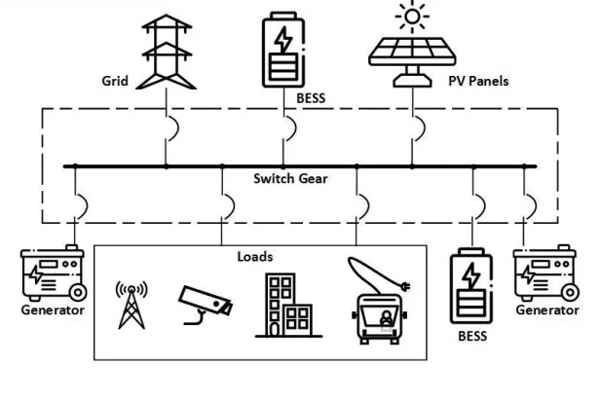
Immergersi più in profondità: Una storia di due sistemi di batterie
Confrontiamoli testa a testa:
| Caratteristica | Alimentazione ininterrotto (UPS) | Sistema di accumulo dell'energia della batteria (BESS) |
|---|---|---|
| Obiettivo primario | Proteggi l'elettronica dai guasti; consentire lo spegnimento sicuro. | Fornire energia di lunga durata; immagazzinare energia solare; gestire i costi energetici. |
| Runtime | Minuti (in genere 5-30 min). | Ore a Giorni. |
| Capacità | Misurato in VA o Watt (PER ESEMPIO., 1500VA / 900W). kWh bassi. | Misurato in kWh (PER ESEMPIO., 10kWh, 20kWh, o molto altro ancora). |
| Misurare | Piccolo, unità desktop o montata su rack. | Grande elettrodomestico, unità a parete, mobiletto, o anche la dimensione del contenitore di spedizione. |
| Integrazione | Dispositivo ad innesto semplice. | Installato professionalmente e integrato nell'impianto elettrico dell'edificio. |
| Tecnologia | Utilizza spesso batterie al piombo sigillate. | Utilizza quasi sempre gli ioni di litio avanzati (LFP) batterie. |
| Utilizzo principale | Protezione delle apparecchiature informatiche (computer, server, attrezzatura di rete). | Backup di tutta la casa, autoconsumo solare, vivere fuori dalla rete, rasatura di punta. |
In breve, un UPS è come una zattera di salvataggio per i tuoi dati, dandoti appena il tempo necessario per metterti in salvo. Un BESS è come la tua isola privata, permettendoti di vivere comodamente e in modo autosufficiente per un lungo periodo. A Gycx Solar, ci concentriamo sulla fornitura di queste "isole private"." Soluzioni BESS per una vera resilienza energetica.
Qual è il più grande deposito di batterie al mondo?
Abbiamo parlato di BESS per case e aziende, ma quanto potrà diventare grande questa tecnologia?? Per comprenderne tutte le potenzialità, è affascinante osservare gli enormi progetti su scala mondiale che stanno trasformando le reti elettriche in tutto il mondo.
Da inizio a metà 2025, uno dei Il più grande sistema operativo di accumulo di energia a batteria del mondo rimane il Moss Landing Energy Storage Facility nella contea di Monterey, California. Questo enorme BESS, gestito da Vistra Energy, ha una capacità operativa di 750 Megawatt (MW) E 3,000 megawattora (MWh). Progetti di questa scala colossale dimostrano l’incredibile capacità della tecnologia BESS di supportare intere reti elettriche e integrare grandi quantità di energia rinnovabile.
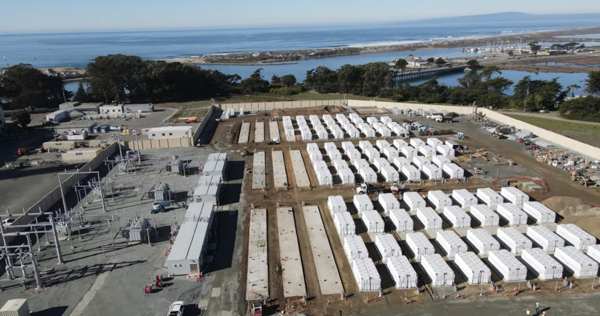
Immergersi più in profondità: La scala dello stoccaggio energetico a livello di rete
Cosa significa a 750 MW / 3,000 MWh BESS come Moss Landing in realtà lo fanno?
- Scala in prospettiva:
- Energia (MW): 750 megawatt sono una potenza istantanea sufficiente per fornire approssimativamente 560,000 case.
- Energia (MWh): 3,000 megawattora è la quantità totale di energia che può immagazzinare. (Ricordare, 1 MWh = 1,000 kWh). Una casa tipica potrebbe essere utile 25-30 kWh al giorno, COSÌ 3,000 MWh equivale al consumo giornaliero di elettricità 100,000 case. Questo BESS può scaricarsi al massimo 750 MW di potenza per 4 ore di fila (750 MW x 4h = 3,000 MWh).
- Scopo del BESS su scala di griglia:
- Stoccaggio di energia rinnovabile: Queste batterie giganti immagazzinano l’energia solare ed eolica in eccesso generata durante le ore centrali della giornata o nelle notti ventose e poi la reimmettono nella rete durante i periodi di punta della domanda serale..
- Stabilità della griglia: Possono rispondere in millisecondi per stabilizzare la frequenza e la tensione della rete, prevenire i blackout e migliorare la qualità dell’energia.
- Sostituzione di "Peaker" Piante: Stanno sostituendo sempre più il gas naturale inefficiente e inquinante "peak"." impianti che tradizionalmente venivano accesi per soddisfare la forte domanda solo per poche ore al giorno.
- La tecnologia: Queste strutture sono costituite da centinaia di grandi, custodie a misura di contenitore, ciascuno pieno di rack di moduli batteria e dei relativi BMS associati, gestione termica, e sistemi di sicurezza. Questi contenitori sono collegati a sistemi di conversione di potenza su larga scala (PC) e poi alla rete elettrica ad alta tensione.
L’incredibile portata di progetti come Moss Landing dimostra che la stessa tecnologia BESS fondamentale che utilizziamo in Gycx Solar per una singola casa o azienda è solida, affidabile, e abbastanza scalabile da alimentare intere città. È al centro della transizione globale verso un futuro di energia pulita.
COSÌ, Cosa significa Bess? Significa un completo, sistema intelligente che fornisce il controllo sulla tua energia. Mentre ci sono considerazioni come il costo e la durata, la moderna tecnologia LFP BESS offre una cassaforte, di lunga durata, e potente soluzione. Da una singola unità montata a parete nella tua casa a enormi strutture di stabilizzazione della rete, BESS1. è la chiave per sfruttare appieno il potenziale delle energie rinnovabili e garantire un approvvigionamento energetico resiliente.
Se sei interessato a come un BESS può adattarsi ai tuoi piani energetici, il nostro team di Gycx Solar ha le competenze per progettare una soluzione per te. Contattaci oggi per saperne di più sui nostri prodotti per lo stoccaggio dell'energia delle batterie.
Comprendere il concetto di BESS in modo da poter confrontare e comprendere meglio i concetti di dati relativi alla batteria. Questo ti aiuterà a scegliere il prodotto che si adatta meglio alle tue esigenze dalla nostra azienda. ↩
